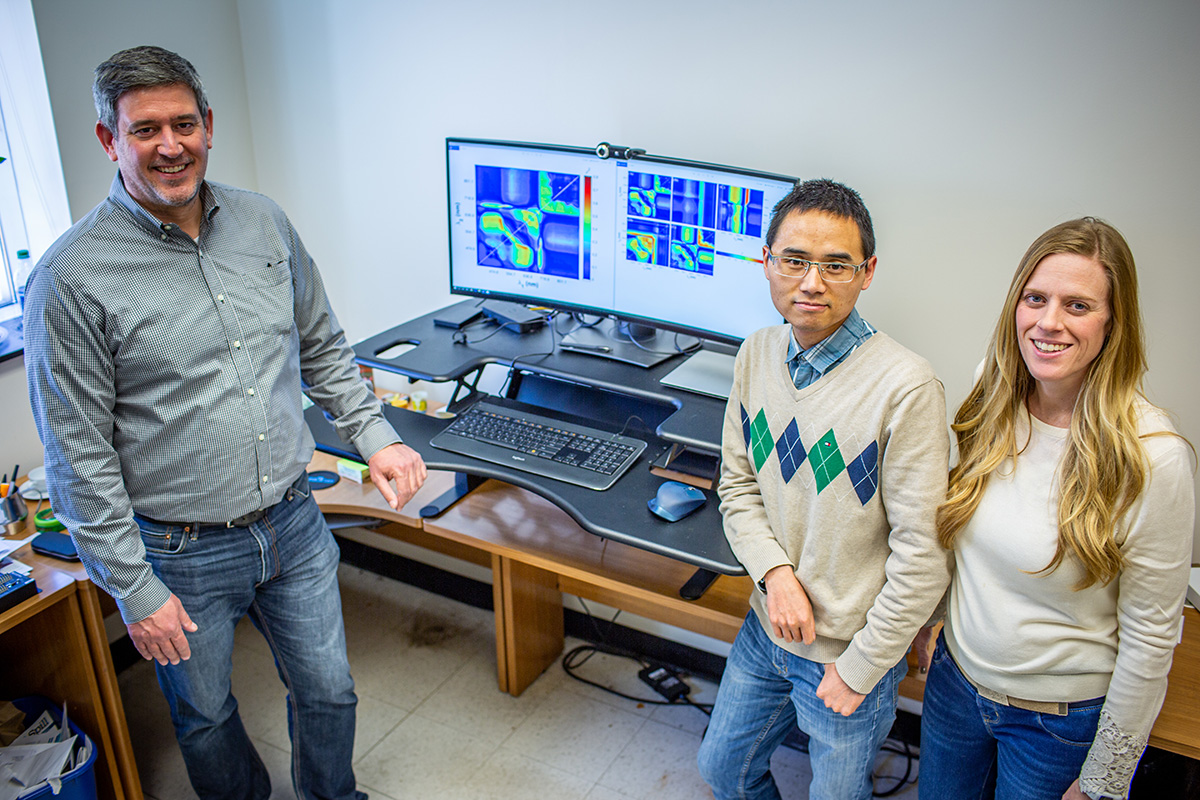Technology to screen for higher-yielding crop traits now more accessible
Like many industries, big data is driving innovations in agriculture. Scientists seek to analyze thousands of plants to pinpoint genetic tweaks that can boost crop production—historically, a Herculean task. To drive progress toward higher-yielding crops, a team from the University of Illinois is revolutionizing the ability to screen plants for key traits across an entire field. In two recent studies—published in the Journal of Experimental Botany (JExBot) and Plant, Cell & Environment (PC&E)—they are making this technology more accessible.

“For plant scientists, this is a major step forward,” said co-first author Katherine Meacham-Hensold, a postdoctoral researcher at Illinois who led the physiological work on both studies. “Now we can quickly screen thousands of plants to identify the most promising plants to investigate further using another method that provides more in-depth information but requires more time. Sometimes knowing where to look is the biggest challenge, and this research helps address that."
This work is supported by Realizing Increased Photosynthetic Efficiency (RIPE), an international research project that is creating more productive food crops by improving photosynthesis, the natural process all plants use to convert sunlight into energy and yields. RIPE is sponsored by the Bill & Melinda Gates Foundation, the U.S. Foundation for Food and Agriculture Research (FFAR), and the U.K. Government’s Department for International Development (DFID).
The team analyzed data collected with specialized hyperspectral cameras that capture part of the light spectrum (much of which is invisible to the human eye) that is reflected off the surface of plants. Using hyperspectral analysis, scientists can tease out meaningful information from these bands of reflected light to estimate traits related to photosynthesis.
“Hyperspectral cameras are expensive and their data is not accessible to scientists who lack a deep understanding of computational analysis,” said Carl Bernacchi (GEGC), a research plant physiologist with the U.S. Department of Agriculture, Agricultural Research Service (USDA-ARS) at the IGB. “Through these studies, our team has taken a technology that was out of reach and made it more available to our research community so that we can unearth traits needed to provide farmers all over the world with higher-yielding crops.”
The RIPE project analyzes hundreds of plants each field season. The traditional method used to measure photosynthesis requires as much as 30 minutes per leaf. While newer technologies have increased efficiency to as little as 15 seconds per plant, the study published in JExBot has increased efficiency by an order of magnitude, allowing researchers to capture the photosynthetic capacity of hundreds to thousands of plants in a research plot.
In the JExBot study, the team reviewed data from two hyperspectral cameras; one that captures spectra from 400-900 nanometers and another that captures 900-1800 nanometers. “Our previous work suggested that we should use both cameras to estimate photosynthetic capacity; however, this study suggests that only one camera that captures 400-900 is required,” said co-first author Peng Fu, a RIPE postdoctoral researcher who led the computational work on both studies.
In the PC&E study, the team resolved to make hyperspectral information even more meaningful and accessible to plant scientists. Using just 240 bands of reflectance spectra and a radiative transfer model, the team teased out how to identify seven important leaf traits from the hyperspectral data that are related to photosynthesis and of interest to many plant scientists.
“Our results suggest we do not always need ‘high-resolution’ reflectance data to estimate photosynthetic capacity,” Fu said. “We only need around 10 hyperspectral bands—as opposed to several hundred or even a thousand hyperspectral bands—if the data are carefully selected. This conclusion can help pave the way to make meaningful measurements with less expensive cameras.”
These studies will help us map photosynthesis across different scales from the leaf level to the field level to identify plants with promising traits for further study.
The RIPE project and its sponsors are committed to ensuring Global Access and making the project’s technologies available to the farmers who need them the most.
---
Realizing Increased Photosynthetic Efficiency (RIPE) aims to improve photosynthesis to equip farmers worldwide with higher-yielding crops to ensure everyone has enough food to lead a healthy, productive life. This international research project is sponsored by the Bill & Melinda Gates Foundation, the U.S. Foundation for Food and Agriculture Research, and the U.K. Government’s Department for International Development.
RIPE is led by the University of Illinois in partnership with The Australian National University, Chinese Academy of Sciences, Commonwealth Scientific and Industrial Research Organisation, Lancaster University, Louisiana State University, University of California, Berkeley, University of Cambridge, University of Essex, and U.S. Department of Agriculture, Agricultural Research Service.
